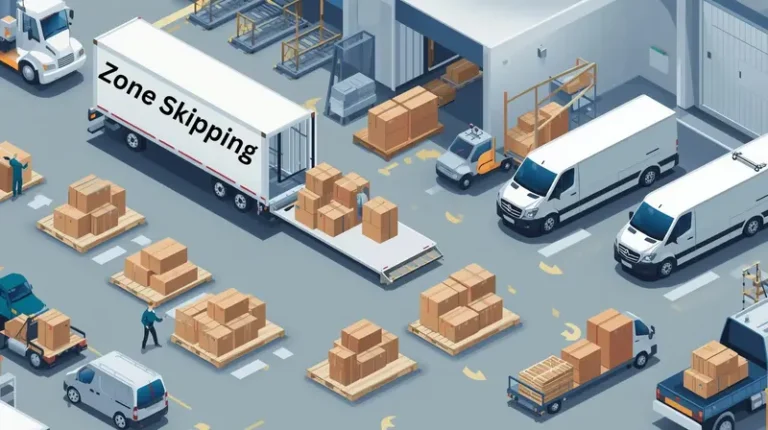UPS DIM Weight: Matches FedEx with Dimensional Weight Change, and Yes, Your Margins Will Notice

Last updated on August 11, 2025

UPS just matched FedEx on packaging trickery, rounding up every fractional inch in a package’s length, width, or height when calculating its dimensional weight (DIM weight) starting August 18. Another silent cost increase shipping pros like us need to wrestle with.
The What, When, and Why
Both UPS and FedEx now say, “If your box is 11.1 inches, we treat it as 12.” No more sweet rounding down at the half-inch mark. That’s a subtle but powerful switch. For example, if your box measures 8.2” x 6.5” x 3.9”, UPS will treat it as 9” x 7” x 4”. And if you’re shipping at scale, this change adds up fast. Keep in mind that if the longest side of your package exceeds certain limits, you may face additional charges or a change in rate category.
This wasn’t on the 2025 pricing roadmap early in the year. But by early August, UPS confirmed the move, aligning with FedEx’s earlier announcement for the same date: August 18.
Let AI Optimize Your Shipping and Boost Profits
Cahoot.ai software selects the best shipping option for every order—saving you time and money automatically. No Human Required.
See AI in ActionWhy It Matters, A Quick Math Example
Dimensional weight (DIM weight) is the king in shipping math-land; it uses (length × width × height) ÷ divisor to decide billing weight, and the higher of actual weight vs. DIM weight wins. The calculation of dimensional weight involves multiplying the package’s length, width, and height to get the cubic size, then dividing by the carrier’s dim factor (dimensional factor), which is a specific number set by UPS. This process is essential to calculate dimensional weight or volumetric weight, and the result is expressed in pounds.
Historically, UPS (and FedEx) calculated DIM weight using actual package dimensions, including fractions, which gave brands a little wiggle room when packaging tightly. Now, any fraction is rounded up to the next whole inch, which inflates the dimensional weight pricing for nearly every box. Think of it as the “rounding tax”; death by inches. The calculation is done in pounds, and the result is always rounded up to the next whole pound.
By rounding each dimension up just a hair… suddenly, cubic volume, and thus billable weight, jumps. For packages exceeding one cubic foot, different dim factors may apply, and UPS uses different numbers for retail rates and daily rates. In one example, a small box shoots from 6 lbs to 8 lbs DIM-weight, and that’s before surcharges. This calculation determines whether the billable weight is based on the actual package weight or the dimensional weight. And by the way, this doesn’t affect the weight on your label; you can tell UPS the box is any size you want, but their scanners will pick up the actual weight and sneak the “real” billed weight into your invoice. Dimensional weight calculations are important for both domestic and international shipments, and using a dimensional weight calculator can help estimate shipping costs accurately.
eShipper’s VP ran the numbers: a model shipper doing 2,500 packages a month sees a $32,678 annual bump, just from this rounding—no volume increase, just rounding.
Carriers Are Quietly Squeezing Margins
This isn’t a one-off. It’s part of a pattern; we’re deep into mid-year margin creep season: surcharges, zone changes, weight triggers. FedEx and UPS are no longer politely increasing GRI once a year, or waiting for peak season to implement Q4 surcharges. What we’re seeing here is an arms race in billing sophistication. Both carriers are squeezing more margin from every cubic inch. Shipping companies like FedEx and UPS use dimensional weight pricing as a pricing technique to optimize shipping rates and shipping cost, basing charges on package size rather than just weight. It’s not about moving packages more efficiently, it’s about charging more per unit of perceived volume.
What Ecommerce Pros and Brand Operators Should Do Now
If you’re an ecommerce brand shipping 1,000+ orders a week, this change will silently eat your margins. A few cents extra per shipment becomes thousands of dollars over time — and that’s before peak season surcharges hit. This change will hurt:
- Merchants using slightly oversized packaging (even if only by millimeters)
- Sellers who haven’t optimized box size or invested in cartonization software
- Brands that rely on single-node fulfillment and can’t zone-optimize shipping
Optimizing package size and packaging materials is essential to reduce shipping costs, especially when dealing with large packages, bulky items, or light packages. Carriers calculate shipping charges based on dimensional weight, so minimizing package size helps ensure you pay less and allows carriers to fit as many packages as possible into their vehicles.
ShipStation vs. Cahoot: 21x Faster, Real Results
Get the inside scoop on how a leading merchant switched from ShipStation to Cahoot—and what happened next. See it to believe it!
See the 21x DifferencePractical Takeaways: How to Adapt Right Now
- Audit packaging profiles: Even small fractions now cost real money—time to measure every template. Where are you paying for air?
- Use a UPS DIM weight calculator: Re-run your most common SKUs and packaging.
- Optimize box sizes: Right-size packaging or switch to flexible poly; trimming half an inch per dimension saves dollars more than you’d think. Reducing the space your package occupies in a truck can help lower shipping heavy items costs.
- Run scenario modeling: Use your shipping data to calculate the delta between the “old math” and the “new math” so finance isn’t blindsided. Note that different shipping carriers may have different dimensional weight policies, so compare options.
- Strategize your fulfillment network: Smaller boxes, smarter distribution; Cahoot’s multi-node platform helps you ship closer to the customer cost-effectively.
Cahoot Angle, Because We’re Not Just Shipping Software
Here’s where Cahoot helps bring clarity (and savings). Our platform enables smarter packaging rules, right down to optimal cartonization, so you don’t accidentally over-bill yourself. Cahoot also helps brands ensure their package dimensions meet shipping company requirements, reducing the risk of unexpected charges from shipping companies like FedEx, UPS, and USPS. Plus, with nationwide networked fulfillment and peer-to-peer returns, you shrink both parcels and long delivery times.
Here’s what you won’t get from a bloated warehouse management system:
- Cartonization automation built-in, not a bolt-on
- Real-time visibility into how packaging size impacts your shipping bill
- Multi-node elasticity: Scale up or down your fulfillment capacity with a national network that flexes with your demand
- No complex IT overhead, WMS integrations, or delays
- A solution designed for ecommerce sellers, not 3PLs stuck in 2015
Think of it this way: while carriers crank up DIM weight via rounding, Cahoot helps you counterbalance—less packing wiggle, more routing finesse, fewer surprise bills.
Putting It All Together, So What’s the Real Impact?
Dimensional weight changes feel minor, but they compound. Carriers just nudged your cost structure upward twice already this summer; this is a third strike, and doing nothing is not an option. The new dimensional weight policy applies to both domestic shipments and international shipments, and most packages will be affected, often resulting in higher shipping costs. But it’s not all bad news.
With a sharpened eye, smart packaging, and tools built to optimize fulfillment (like Cahoot), there’s a way to maintain margins, even in a world where every fractional inch counts.
Cut Costs with the Smartest Shipping On the Market
Guranteed Savings on EVERY shipment with Cahoot's AI-powered rate shopping and humanless label generation. Even for your complex orders.
Cut Costs TodayFrequently Asked Questions
What is UPS dimensional weight and how is it calculated?
UPS DIM weight is a pricing method based on the size of a package, not just its weight. It’s calculated as (L × W × H) ÷ 139. Now, each measurement is rounded up to the next inch before this formula is applied. The number 139 is called the dim factor (or dimensional factor), which is a specific number set by UPS. To calculate dimensional weight in pounds, you divide the cubic size of the package by this dim factor.
How does this change affect ecommerce sellers?
Sellers may see higher shipping charges, especially if packaging is not tightly optimized. This change increases shipping cost and shipping rates, particularly for large packages, bulky items, and light packages, as dimensional weight calculations now play a bigger role in determining the final price. Small differences in box dimensions can now lead to bigger billing weights, raising costs without warning.
How much more could I pay due to the DIM weight round-up rule?
It depends, but even minor changes can push DIM weight up a pound or two per package. This cost increase is a result of dim weight pricing and updated dimensional weight calculations used by carriers to determine shipping rates. Model scenarios showed cost jumps in the 6% to 9% range, and cumulative monthly billing increases thousands of dollars.
What immediate actions should brands take?
Measure all the things. Right-size packaging by carefully selecting package dimensions to fit your products, which can help reduce shipping costs and avoid extra charges from the shipping company. Run cost simulations. And, if you’re using Cahoot, lean on our platform to automate smarter routing, packaging, and scale-efficient fulfillment.
Can Cahoot help reduce dimensional weight shipping costs?
Yes. Cahoot’s platform includes cartonization software and multi-node fulfillment, helping brands use the smallest possible packaging and ship from closer to the customer — cutting both DIM charges and zone surcharges.
Do FedEx and UPS now use the same dimensional weight policy?
Yes. As of August 18, 2025, UPS matches FedEx by rounding up every dimension to the nearest inch, standardizing the DIM weight billing model across both major U.S. parcel carriers.

Turn Returns Into New Revenue


 8 minutes
8 minutes


